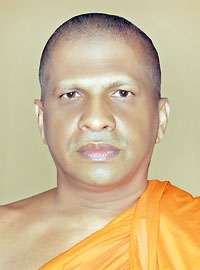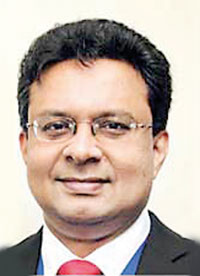Sunday Times 2
Lanka’s under-tapped fount of spiritual tourism
 Today business volume of tourism equals or even surpasses that of oil exports, food products or automobiles as the United Nations World Tourism Organisation (UNWTO) points out. ‘Tourism has experienced continued growth and deepening diversification to become one of the fastest growing economic sectors in the world. Modern tourism, as UNWTO highlights, is closely linked to development and encompasses a growing number of new destinations, and is a key driver for socio-economic progress. UNWTO says that developing countries in particular stand to benefit from sustainable tourism. According to UNWTO statistics, in 2017, international tourist arrivals grew by 7 percent to 1,323 million and generated US$ 1.6 trillion in foreign exchange earnings. UNWTO forecasts a growth in international tourist arrivals of between 4 and 5 percent this year and, by 2030, the arrivals will reach 1.8 billion.
Today business volume of tourism equals or even surpasses that of oil exports, food products or automobiles as the United Nations World Tourism Organisation (UNWTO) points out. ‘Tourism has experienced continued growth and deepening diversification to become one of the fastest growing economic sectors in the world. Modern tourism, as UNWTO highlights, is closely linked to development and encompasses a growing number of new destinations, and is a key driver for socio-economic progress. UNWTO says that developing countries in particular stand to benefit from sustainable tourism. According to UNWTO statistics, in 2017, international tourist arrivals grew by 7 percent to 1,323 million and generated US$ 1.6 trillion in foreign exchange earnings. UNWTO forecasts a growth in international tourist arrivals of between 4 and 5 percent this year and, by 2030, the arrivals will reach 1.8 billion.

Ven. Prof. Wijithapura Wimalaratana Thera: Buddhism has a great appeal to the educated and open-minded non-Buddhists across the world
How this growing industry could redesign itself to adapt to the rising ageing population across the globe, in terms of spiritual and cultural tourism is interesting to expound. As a nation nourished by four great faiths of the world and replete with a dynamic heritage, Sri Lanka’s potential to capitalise on spiritual and cultural tourism is unlimited. The World Population Prospects: The 2017 Revision notes that the number of older persons — 60 years or over — is expected to more than double by 2050 and more than triple by 2100, rising from 962 million globally in 2017 to 2.1 billion in 2050 and 3.1 billion in 2100. Globally, the 60 plus age group is growing faster than all younger age groups.
In 2017, according to the UN statistics on ageing, there were an estimated 962 million people aged 60 or over in the world, comprising 13 percent of the global population. The population aged 60 or above is growing at the rate of about 3 percent a year. Currently, Europe has the greatest percentage of population aged 60 or over — which is 25 percent. Rapid ageing will occur in other parts of the world as well, so that by 2050 all regions of the world except Africa will have nearly a quarter or more of their populations at ages 60 and above.
The Monthly Tourist Arrivals Report (September, 2018) of the Sri Lanka Tourism Development Authority (SLTDA) indicates a growth of 2.8 percent in tourist arrivals to the country, compared to September, last year. The largest source markets were India, China and Britain during September this year. The Asia and Pacific regions continued to be the largest source of tourist traffic to Sri Lanka accounting for 47 percent of the total traffic in September this year. Europe accounted for 43 percent of the total traffic, America 6 percent, the Middle East 3 percent and Africa 1 percent. Europe with the largest ageing population appears to be an ideal target market to promote Sri Lanka’s cultural and spiritual tourism. With the West seeking more and more spiritual outlets, our UNECO World Heritage sites and diverse Buddhist, Hindu, Christian and Islamic religious sites, provide ‘year-round opportunities for a diverse range of visitor experience and activities without the need to contrive attractions’ as the Sri Lanka Tourism Strategic Plan (SLTSP) 2017-2020 envisages. Promotion of spiritual and cultural tourism is also aligned with the SLTSP’s vision for the country to be recognised as ‘the world’s finest island for memorable, authentic and diverse experiences by 2025’.
“Be it wellness, mindfulness, meditation — Asia has it all and particularly, Sri Lanka as a one-stop shop for diverse cultural and spiritual tourism products. The popularity of cultural tourism has increased faster than most other tourism products, given the breakdown of values and human relationships in the west. In this setting, more and more western tourists, particularly the mature ones are seeking spiritual pleasures of Asia,” says Sri Lankan Tourism Promotion Bureau (SLTPB) Managing Director Sutheash Balasubramaniam.

Sutheash Balasubramaniam: Sri Lanka a one-stop shop for cultural and spiritual tourism
He says that despite the accumulated wealth and fame in the case of western celebrities, the spiritual vacuum in which most of them live propel them to seek the ‘healing properties of Asia’. “With age, comes more maturity and the western tourists with ample leisure and wealth are looking for tourist attractions which are cultural and wellness bound unlike the younger segment which is looking out for adventure tourism,” he adds.
Promoting sustainable tourism aligned with the UN’s Sustainable Development Goals (SDGs) is imperative in this regard, observes Mr. Balasubramaniam. “We need a more solidified effort to conserve our popular cultural and religious sites and, at the same time, to promote lesser known religious and cultural sites.” Exploiting the digital space to attract the mature western tourist who is technologically savvy is also mooted by the official.
The potential to develop spiritual and cultural tourism which comes within the purview of ‘Supplementary Sources of Tourism’ is enormous for the country, says the Ven. (Prof) Wijithapura Wimalaratana Thera, Head of the Department of Economics at the University of Colombo. “Although more attention has been given to ‘mainstream’ tourism products, including entertainment and leisure, little attention is still paid by our industry to focus on cultural and spiritual tourism, which is now sought by more than 300 million people across the globe, largely the more mature population.” With no professional or personal commitments in their retirement and with sufficient savings, the western tourists are seeking leisure outlets of a different nature, predominantly, spiritual and cultural centric ones, observes the Ven. Prof. Wimalaratana Thera, who attributes this trend to the free flow of information that spurs curiosity and the need for mental solace.
Buddhism, as the prelate explains, has always promoted peaceful co-existence, democracy, religious freedom and harmony among all communities and this, too, has a great appeal to the educated and open-minded non-Buddhists across the world to explore the Buddhist culture here at home. The Buddhist culture, which is closely interwoven with our indigenous medicine tradition, too, can be exploited to cater to the elderly tourists, he says. Revamping the abandoned estates of the country to establish meditation retreats with amenities and encouraging community tourism which can generate not only employment opportunities but also foster long lasting bonds and cross cultural dialogue are mooted by the Thera as the way forward.
“The industry needs to be prepared for this social reality of the growing ageing population and cater to fill the gap of English language proficiency and other skills required, specially by the youth pursuing unconventional careers such as tour guiding,” he adds.

